The main purpose of an electronic energy meter is the accurate metering of the customer consumption. The meter has registers for storing the various consumption values (kWh, kvar, demand…).
Some customer request to get direct connected energy meters without decimals because they are worried about an eventual overflow.
Transformer operated meters are switching to the next higher dimension (MW, GW).
When does an overflow happen?
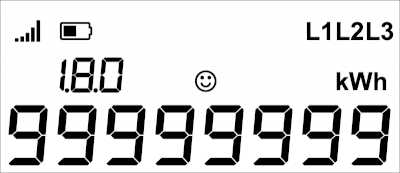
We consider a direct connected three-phase meter with 230 V and 100 A. If the customer is permanently consuming the maximum active power, the meter will reach the value in the picture after 167 years. For a single phase meter it's more than 500 years.
Electronic energy meters have a lifetime of 15 … 20 years, so we will never ever get an overflow with an 8 digit energy register display without decimals.
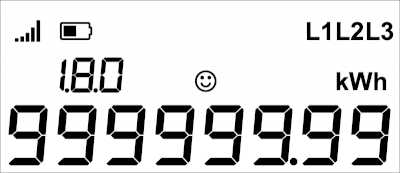
If we have two decimal digits, the same meter under permanent full load condition reaches the overflow much earlier (single phase 5 years, three-phase 1.6 years).
Once the overflow is reached, we are omitting one decimal digit. So finally we will end up with no decimals and the values given in the first picture.
Decimals in the register display
Its common praxis that energy meters have an 8 digit display with two decimals. There are two main reasons behind, both are related to the meter testing. In the previous blog you have seen the acceptance criteria for the short interruption and voltage dips. There is a formula for the critical change value. To conduct this tests its necessary that the meter has a sufficient display resolution. A meter without decimals will never change the value, but is it Pass?
Definitely not, you simply don't know the value change (if any).
When look on a graphic for common energy meters with Un= 230 V we can see that a resolution of two decimals is sufficient for taking the values from display reading.
If the meter has an optical port it's recommended to use this interface to read more accurate. The internal register for CLOU meters is holding 4 decimals.

The other reason for decimals is the meter constant- and register test.
While the IEC62052-11 requires a meter constant test, the IEC 62058-31 for meter acceptance tests refers to the classical register test.
Meter Constant Test IEC62052-11
This test is for checking the relationship between the test output and the energy meter register. The difference of the value between test output and register content shall not exceed ±1/10th of the meter accuracy class. For full wording look into the standard.
Practically we are counting the pulses and compare with the register reading.
Example:
We have a meter class 1. So the allowed meter constant error is 0.1%.
How much energy do we need to inject to get a doubt-free test result?
To get a resolution of 0.1% we need to count minimum 1000 pulses. Then we divide our 1000 pulses with the meter constant to get the energy value which we have to inject.
A meter with a constant of 400 i/kWh needs 2.5 kWh while a meter with a constant of 2000 kWh needs only 500 Wh. This test is a meter type test. The test institutes will read by optical head, so the required resolution is there. If you want to do this test with your utility laboratory test bench, you either read also the internal register or you multiply the calculated energy value by 10 to gain the required reading accuracy for a meter with two decimals.
Register Test IEC62058-31
The standard for meter acceptance tests is used for routine testing and acceptance tests in utility laboratories. With the register test we are comparing the injected energy with the register incrementation. The injected energy is recorded by the reference standard of the test bench, the register reading can be done manually or with optical head.
How much energy do we need to inject?
The standard wording: This test shall be performed by measuring a sufficient amount of energy to verify that the accuracy of the incrementing register reading is better than ± 1.0%.
To get the required reading accuracy the energy is related to the number of decimals which we can read from the meter.
A meter with two decimals for energy reading needs 1.1 kWh to have a reading better than ± 1.0%. If the meter has three decimals, only 0.11 kWh is needed.
The register test is very time-consuming for meters without decimals. The best balance between short testing times and display reading functionality in the field is two decimal digits fix, or with a selectable high resolution by push button.
In addition, the register shall be able to record energy for a minimum of 4000 h, starting from zero.
Thank you for reading. If you have remarks or questions, please contact us or use the comments-area below.
Update 27.08.2021
Since we had a question on the "sufficient amount of energy", we take a look at an evaluation list. The IEC standard is not very specific. To gain the required accuracy better than 1.0%, it is mandatory to link the injected energy to the number of decimals, which can be read from the meter.
The formula for error calculation is

Now we look at the meter decimals.
- One decimal XXXXXXX.X
You need to inject at least 10 kWh to come to an error of -1 % (you read 10.9 kWh, FAIL) or +1 % (you read 11.1 kWh, also FAIL). Pass is only your reading 10.0 kWh
If you want to enlarge the reading range, you can inject energy. Means, injected is 11 kWh, you read 11.1 kWh, the calculated error is now +0,91 %, PASS - Two decimals XXXXXX.XX
Injected energy is minimum 1 kWh. To improve the reading range, 1,1 kWh would be better. - Three decimals XXXXX.XXX
Following the same considerations as above, 0.1 kWh is the minimum. As the test process for meters with 3 decimals is really fast, you can double the energy to inject.
The idea behind the sufficient amount of energy is, that you need to give the meter a chance to fail. If you inject less, you don't have a clean PASS/FAIL estimation.
Keep also in mind, that the meters might have remaining energy in their sub-counters from previous tests. If you get a FAIL with the minimum calculated energy, re-test with more energy. I know several utilities, which have doubled the energy to avoid re-testing. Their meters with two decimals receive 2 kWh for register test
Finally, everything is related to your experience with the different meter types.
Editor's note: This article was originally published in July 2020 and has been updated for comprehensiveness.
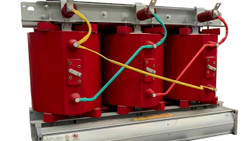
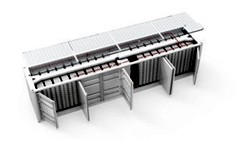
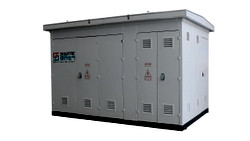
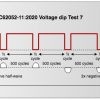

First of all, I need to thank you for this clear explanation about Constant test vs Register test. I gained a lot from your article. But I got confused while deciding the energy to be injected because no error limit has been mentioned in the IEC 62058-31 standard for different classes.
Kindly clarify that if I need to perform Register test for a CTPT meter which has following,
* Current ratio is 20
* Voltage ratio is 300
* Meter constant is 10,000
* Resolution is 1 Wh
* class is 0.2 for active energy and 1 for reactive energy
* Two decimal value
What should be the Energy to be injected? And If I inject 1000kWh which should be the range of meter reading 990 kWh to 1010 kWh or 998 kWh to 1002 kWh?
Highly appreciate your response !
Thank you for your comment. The register test is to make sure that the meter counter works properly. It's no accuracy test. The 1% limit is IMHO an unlucky formulation, but useful for having a threshold. If you do the register test, your evaluated error comes close to your accuracy measurement level. This can have some impact on testing energy meters class 2 or above. To your question:
CT/PT meters are measuring on the secondary side. For example, your meter has a nominal current of 5 A. With your ratio you are operating on the primary side with 100 A. Same for the voltage, if your nominal voltage is 63.5 V, you are operating in a 33 kV grid. So, with two decimals, you need 1000 kWh primary side, which makes 0.17 kWh injection on your test bench (1000 kWh divided by your ratios). Then, all readings between 990 kWh and 1010 kWh are within 1% and PASS.
Happy testing.
kindly clarify what it means byThis test shall be performed by measuring a sufficient amount of energy to verify that the accuracy of the incrementing register reading is better than ± 1.0%.
How is this calculated?
Thank you for your question. The IEC standard is not very clear, but we can do some calculations.
Please take a look at the article, I've made an update at the bottom.